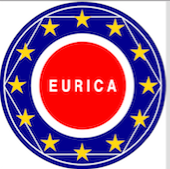Speaker
Dr
Atsuko Odahara
(Department of Physics, Osaka University)
Description
Shape evolution is one of the most important subjects to understand competition between single-particle and collective motions in nuclei as a function of neutron and proton numbers. Study of shape evolution in very neutron-rich nuclei became possible by the EURICA project. The nuclei around neutron-rich doubly-magic nucleus $^{132}$Sn indicate characteristics with spherical shape, whereas the mid-shell isotopes with $Z$$\sim$66 and $N$$\sim$100 are well known to have deformed shapes. However, for neutron-rich isotopes with $Z$=51-55 in the transitional mass region, informations are limited on the low-lying states because of the difficulty of the production of these nuclei. For these transitional nuclei with $N$$\sim$88, not only prolate collectivity but also octupole collectivity are expected to have important effects on their nuclear structures. In order to investigate the mechanism of nuclear structure change in the transitional mass region, the neutron-rich isotopes of Sb, Te, I, Xe and Cs were studied systematically based on the $\beta$-$\gamma$ and the isomer spectroscopy as one of the EURICA campaign experiments in May 2013. In the present report, the change of nuclear structure will be discussed for the low-lying states as a function of neutron and proton numbers.
Primary author
Dr
Atsuko Odahara
(Department of Physics, Osaka University)

